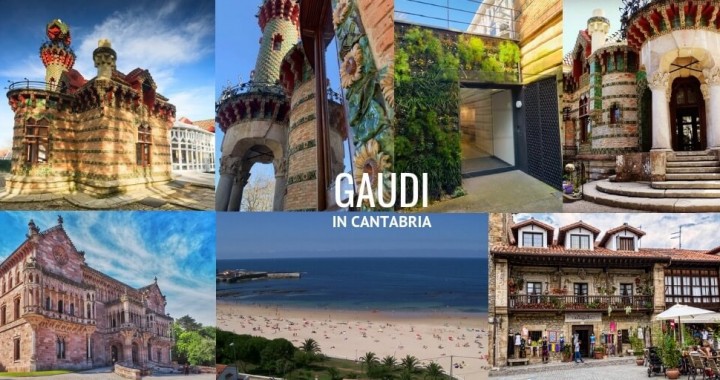Cantabria in Spain is world-famous for its Paleolithic cave art, magnificent beaches and gastronomy but not many people know it’s a key place too in the colourful history of Catalan architect, Antoni Gaudi. At Totally Spain, we’re just back from a visit to Gaudi’s Capricho in Comillas, Cantabria and if you are a fan of design, architecture and photography, here are 8 reasons why you really should visit Comillas and Cantabria too…
Gaudi in Cantabria | Why Architecture Fans Must Visit El Capricho
1 Experience Gaudi without the Crowds
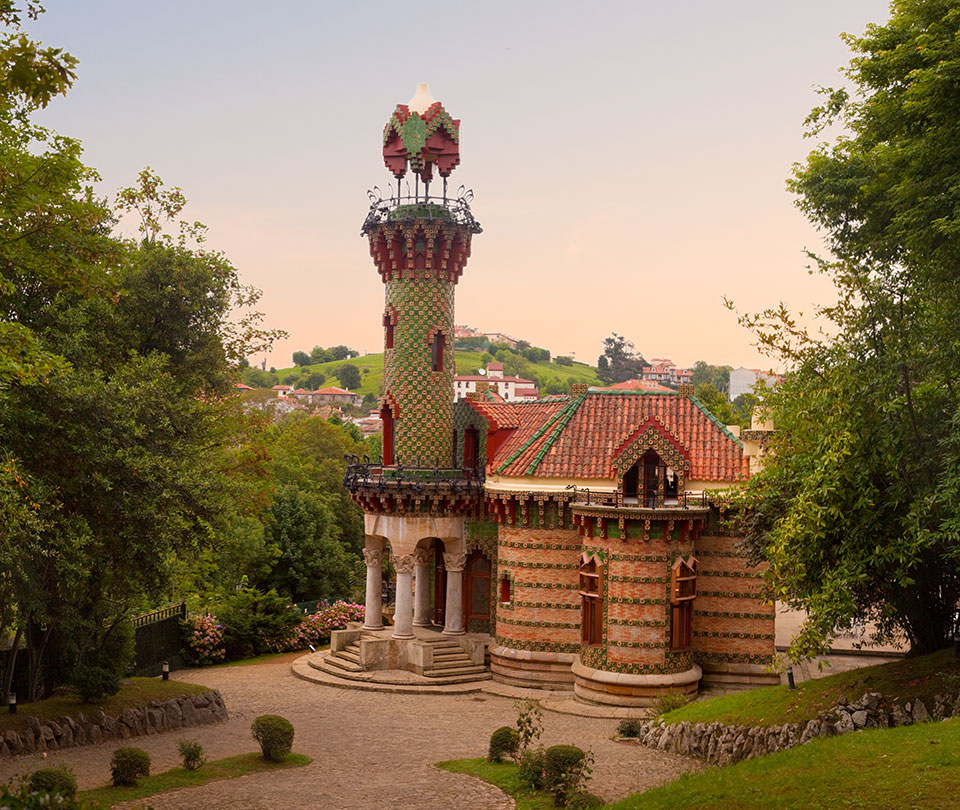
Plenty of fresh air and space to explore the work of the Maestro here in Comillas, in rural Northern Spain! Pic credit: El Capricho de Gaudi
Gaudi’s most famous buildings are in Barcelona and the lines are so long, Totally Spain put together its guide to Gaudi’s Barcelona to help clients negotiate the hordes of visitors. The Sagrada Familia, for example, receives 4.5 million visitors a year (that averages at 12,300 a day!) and even the smaller sights such as Casa Batlló rack up 1.1m visitors a year (that’s 3,000 people a day). Even if you do pre-book your tickets and go early, the traffic and crowds in Barcelona can make it hard to enjoy both the interior and exterior of a Gaudi building. That’s one of the reasons Totally Spain recommends hiring our expert private guide who can help you negotiate the crowds.
It’s very different at the Capricho (meaning whim, folly or a touch of fancy), where you have a wonderful sense of space to experience the exterior – thanks to the gardens and the raised path (above the cave) which allows you to contemplate the minaret tower in solitude. And inside, you’ll only find a handful of groups on tour each day so you really can imagine what it was like to live in the house and explore the spaces on your own. Totally Spain recommends taking the tour provided by the museum – the tour guides really go out of their way to make you feel welcome and get the most from your visit. If your itinerary doesn’t fit in with the pre-scheduled tours in English, Totally Spain would be delighted to arrange a private tour with the Capricho on your behalf.
To get to crowd-free Comillas, all you need to do is take a short internal flight to Santander and when you land, drive or be driven the half-hour to Comillas, an extremely interesting and charming coastal town that’s crowd-free! [NB Totally Spain doesn’t book international flights, but we can advise on internal flights and we handle everything else from car-hire, tickets to museums, guides and more.]
2 Visit Two of Gaudi’s Early Commissions – Designed on the Cusp of his Success
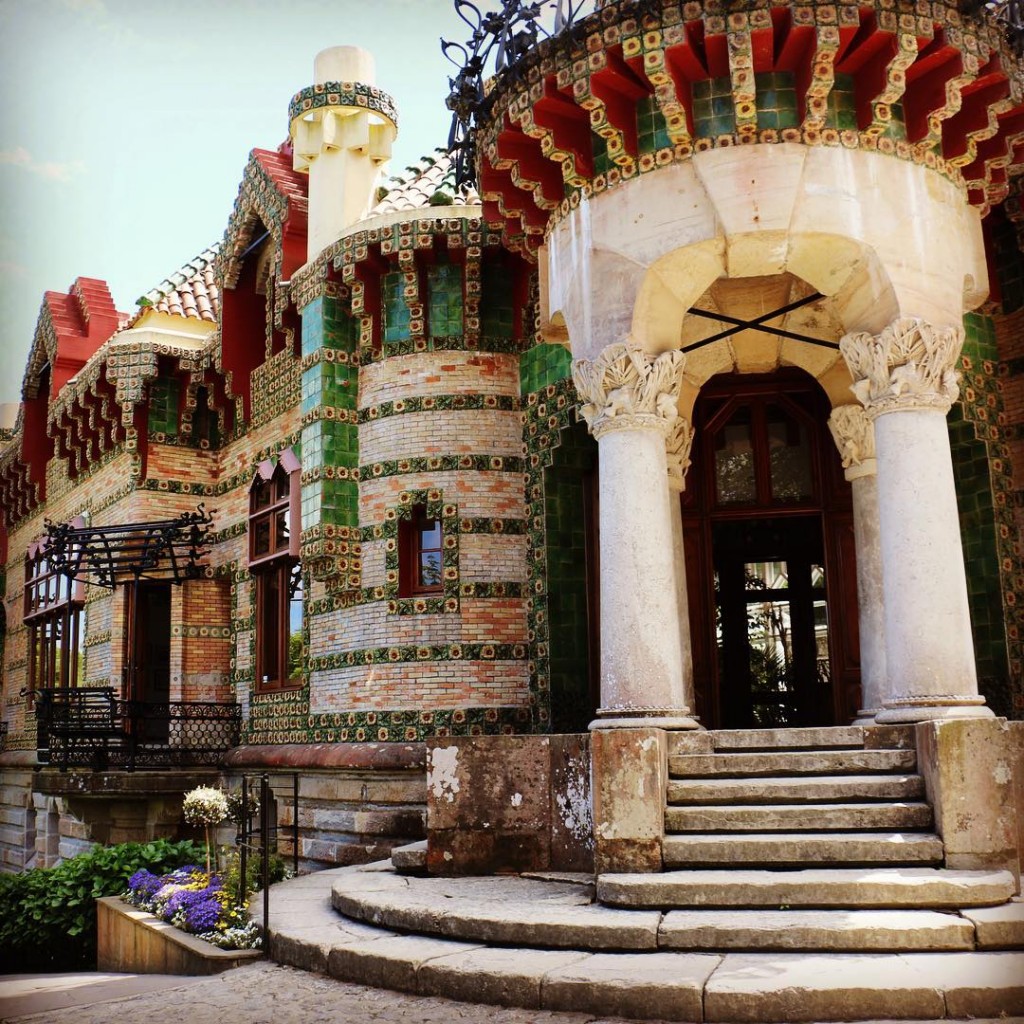
Doesn’t look like the work of a young architect, does it? Pic credit: El Capricho de Gaudi
As you begin your tour of the Capricho, your guide will tell you to turn around and look at the neo-gothic chapel. That’s where you’ll find examples of Gaudi’s first work in Comillas. You can visit the chapel separately, which was built for the first Marquis of Comillas, to see the carved chairs and benches designed by a very young Gaudi. Joan Martorell, the most famous architect in Spain in the 19th century was Gaudi’s lecturer, and when he was designing the Marquis’ palace and chapel, he encharged his student to work on elements inside the chapel.
A few years later, when Maximo Diaz de Quijano, the first owner of the Capricho (who was a lawyer to the Marquis) was looking for an architect, one presumes he sought advice from either the Marquis or perhaps he went straight to Martorell who recommended Gaudi. Around the same time, Martorell recommended that Gaudi take over the Sagrada Familia project in 1883, when the first architect retired from the role. That year, Gaudi worked simultaneously on the Capricho, Casa Vicens and the Sagrada Familia as well as a project in Mataró. Quite a lot for a recently graduated architect. Totally Spain recommends visiting Casa Vicens in its guide to Gaudi’s Barcelona. The house opened to the public a little over a year ago and is one of the quieter sites in BCN to experience Gaudi. But, there’s some very special surrounding the Capricho in Comillas which has been welcoming visitors to its museum since 2010.
3 Understand the Beauty of the Sunflower Tile – Innovative Design at its Best
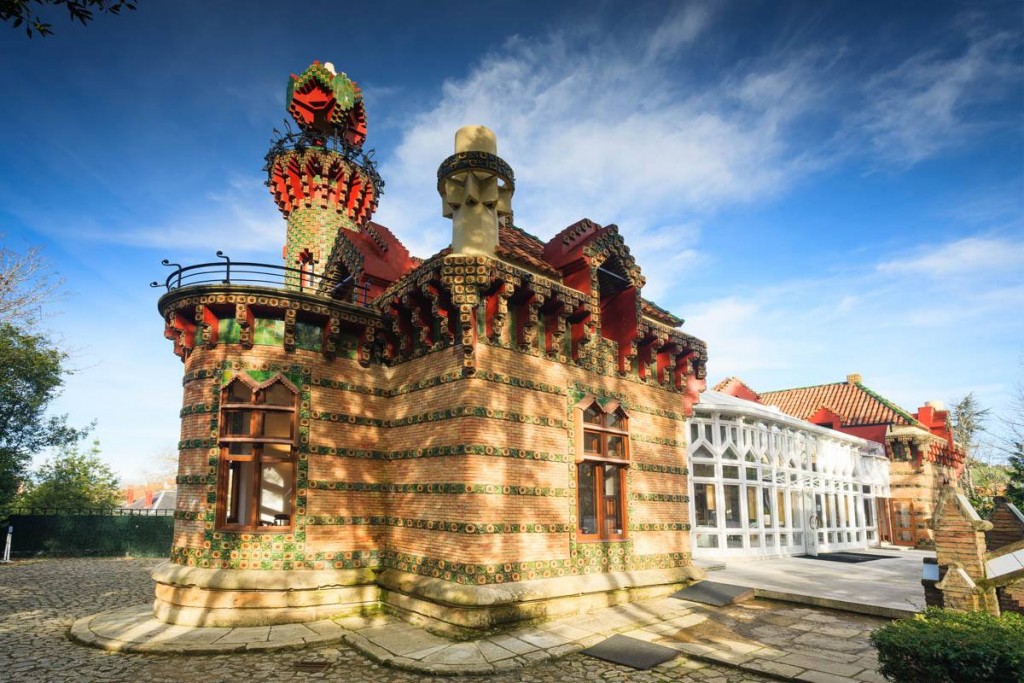
Not just a pretty idea for a tile, the sunflower is a metaphor for the building in its entirety- soaking up sunlight and warmth as the day progresses. Pic credit: El Capricho de Gaudi
When Gaudi was awarded his degree in architecture, apparently the director of the Architecture School said to his colleagues, “Today we have given an architecture degree to a madman or to a genius.” Well, there’s no debate on this in Cantabria. A visit to the Capricho shows none of the madman and all of the genius, in every tile, railing and doorknob.
Take his use of the sunflower in the Capricho. While on the surface, it seems like a pretty idea for a tile, it is in fact a symbol for the design of the house. The climate in Comillas is cooler and damper than that of Barcelona and Gaudi was keen to design a house that could take advantage of daylight – an architectural sunflower. The pattern created by the sunflower tiles also indicates one of the passions of the owner. The five lines of sunflower tiles are like a staff or music page – and there are countless more musical metaphors inside which Gaudi features in wonderfully subtle ways.
Whilst Gaudi always reflects his personal love for nature and the passions of each his clients in every project, it’s impossible not to be bowled over by the way Gaudi represents the interests of the owner Maximo in every inch of the house.
4 Witness Exclusive Designs and Eclectic Styles in Perfect Harmony
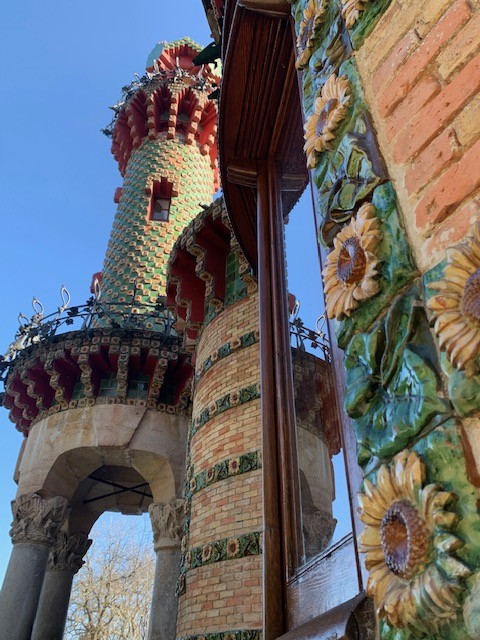
Welcome to the Capricho where Gaudi combines wildly differing architecture styles in relative harmony. Pic credit: Pamela Cahill
Every Gaudi building is an exploration of materials, and his ability to seamlessly merge contrasting styles is always impressive. In Comillas, you get to see Gaudi’s Catalan tiles and wrought iron, but you see different timbers and materials that respond well to the local climate. You only have to see and touch the Caribbean pitch pine to know it was a perfect choice and would also have been familiar to owner Maximo, a keen botanist, who had been working in Cuba before returning home to Comillas.
As with other projects, you see Gaudi’s love of Oriental and Middle-Eastern architecture reflects in the Capricho but the way he combines these passions with other more classical styles is truly remarkable. Take for example the Greek columns with a minaret on top – that alone makes the trip worthwhile.
Totally Spain doesn’t want to give away all the secrets of the house before you visit, but the inner design of the sash windows is unique to the Capricho. Listen and you’ll hear why!
Very little has changed since Maximo first moved in, back in 1885, but we did catch a glimpse of a lovely vertical garden that was planted a few months ago following the upgrading of visitor facilities and love the result. See if you can find it on your visit…
5 Learn about the Indianos from Northern Spain
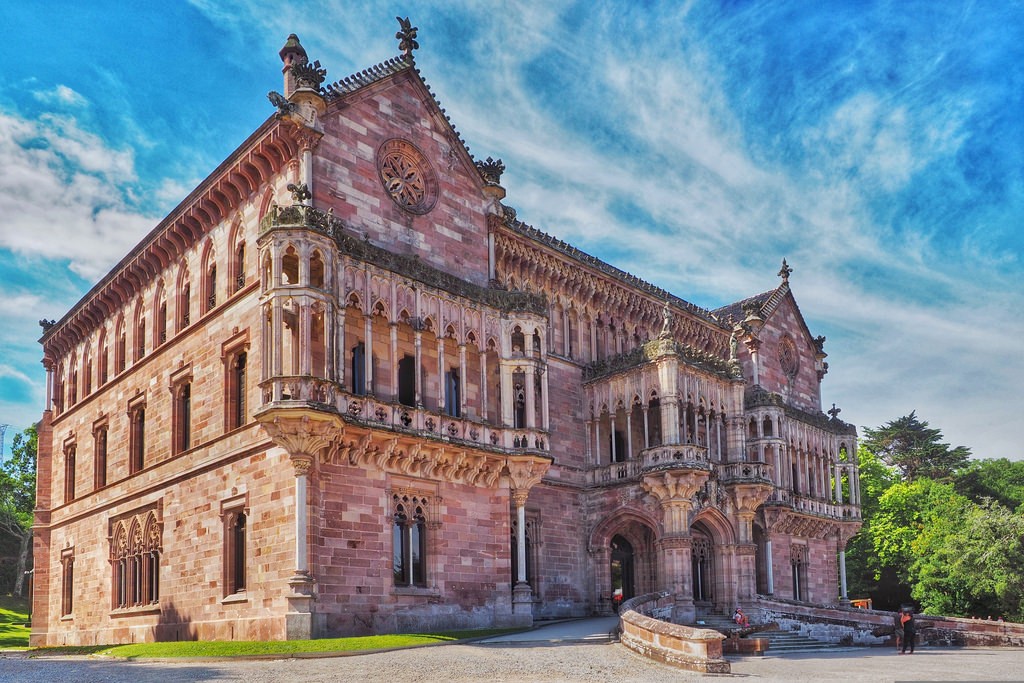
The Marquis of Comillas was the town’s richest emigrant who put Comillas on the map by commissioning the Catalan architect, Joan Martorell, to build this palace. photo credit: Juandalfweb Palacio de Sobrellano – Comillas via photopin (license)
As with any Gaudi building, you learn as much about the owner as you do about the architect. And in the Capricho, you get to learn lots about Maximo Diaz de Quijano, who was a lawyer working in Cuba when he commissioned the house. That made him an Indiano – one of the many people who travelled from Northern Spain to the Americas in search of fame and fortune. When you visit Comillas, you learn the tale of the first Marquis of Comillas (an Indiano who left Spain aged just 14) as well as the story of Maximo. Within Comillas, you’ll find many more Indiano houses – and the symbol of the palm tree is an interesting one – which you’ll come across very frequently here in Northern Spain. Your guide will tell you all about the history of the Indianos and if you want to learn more, Totally Spain can arrange for you to visit a number of other Indiano houses – Sobrellano Palace in Comillas for example, and perhaps the home of the Marquis of Valdecilla also in Cantabria. If you’re visiting Comillas in August, you might also be interested in seeing or even taking part in the Dia del Indiano which features locals and visitors in period costume, marking the importance of these individuals to their area.
6 Learn about the Role of the Spanish Royal Family in Cantabria
You can’t spend time in Comillas, or Santander for that matter, without learning about the Spanish Royal Family. King Alfonso XII first visited Comillas with his wife Maria Cristina in 1881 (by invitation of the first Marquis of Comillas) and this was the catalyst for significant investment. The Royal Couple stayed at Casa Ocejo in the very centre of Comillas – in a house that the Marquis has originally built for his mother. In fact, reports say that Gaudi was one of the many architects called upon to give the house a refurb before the Royals arrived. Gaudi was also called upon to design a small folly for the visit – which is unfortunately no longer in existence – but you can see charming photos at the Capricho at least. After the Royals left, the government came to town – when a cabinet meeting took place in Comillas in September 1881. Can you imagine what it was like for the town to go from a humble fishing village to a destination frequented by the ruling class of Spain?
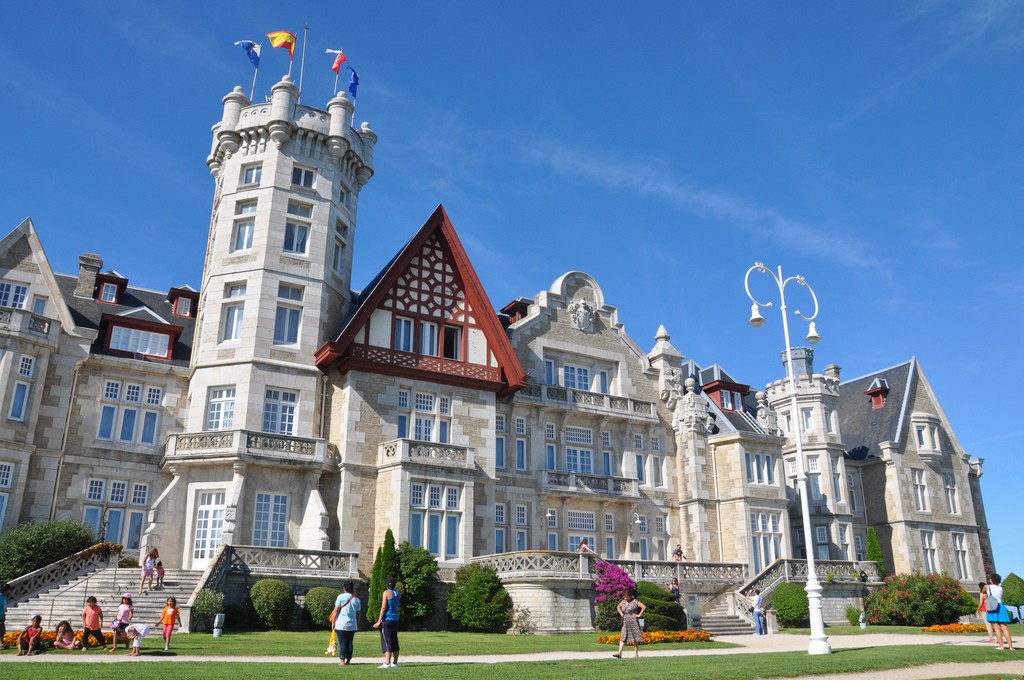
After visiting Comillas which was frequented by Alfonso XII, you should also step back in time at the Magdalena Palace in Santander – the Summer Residence for Alfonso XIII. photo credit: Palacio de la Magdalena via photopin (license)
The royal family returned for the Summer of 1882 when the Queen spent a month here on vacation – which helped portray Comillas favourably amongst the aristocracy and upper classes all over again. With all the fuss that any Royal visit implies, you won’t be surprised to learn that Comillas was the first town in Spain to install electric street-lighting. This golden era for Comillas was dealt a blow in 1883 with the passing of the Marquis, aged 66; and again, in 1885 with the passing of King Alfonso XII aged just 27. The throne passed to the king’s unborn son who became Alfonso XIII upon birth. When Alfonso XIII was 27, the city of Santander handed him the keys to a brand new palace for his Summer vacations and Comillas’ lost much of its royal cachet – although, the Royals continued to visit the town. Totally Spain can arrange a tour of Magdalena Palace in Santander when you are in the city to learn about Alfonso XIII and his Scottish wife, Victoria Eugenie.
7 Experience the Test-Bed of Modernismo in Cantabria
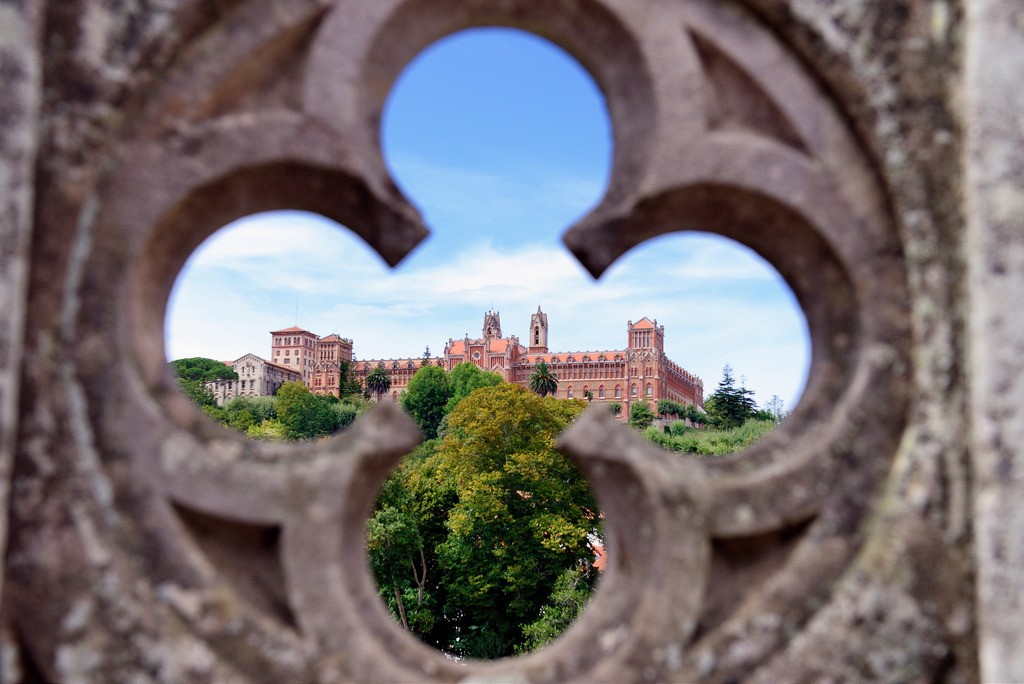
The elegant Fundacion Comillas designed by Joan Martorell, acclaimed architect and yes, Gaudi’s teacher. photo credit: daaot Fundación Comillas vista desde el Palacio de Sobrellano via photopin (license)
If you enjoy Modernismo, Comillas is an endless source of inspiration with the leading Catalan architects including Domenech i Montaner, Llimona & Martorell being called upon to design palaces, seminary, chapels, cemeteries and more. You can get a sense of the scope of their work in this video by the Capricho on the town of Comillas. Totally Spain can arrange a tour of all of these elements – again, without the crowds. Totally Spain can also arrange for a city-tour of Santander including a number of interesting examples of art-deco and modernism. Your guide will also show you the new kid on the block – the Renzo Piano designed art centre, Centro Botin.
8 Travel & Dine in Style (For Exceptional Value) in Green Spain While Enjoying Gaudi
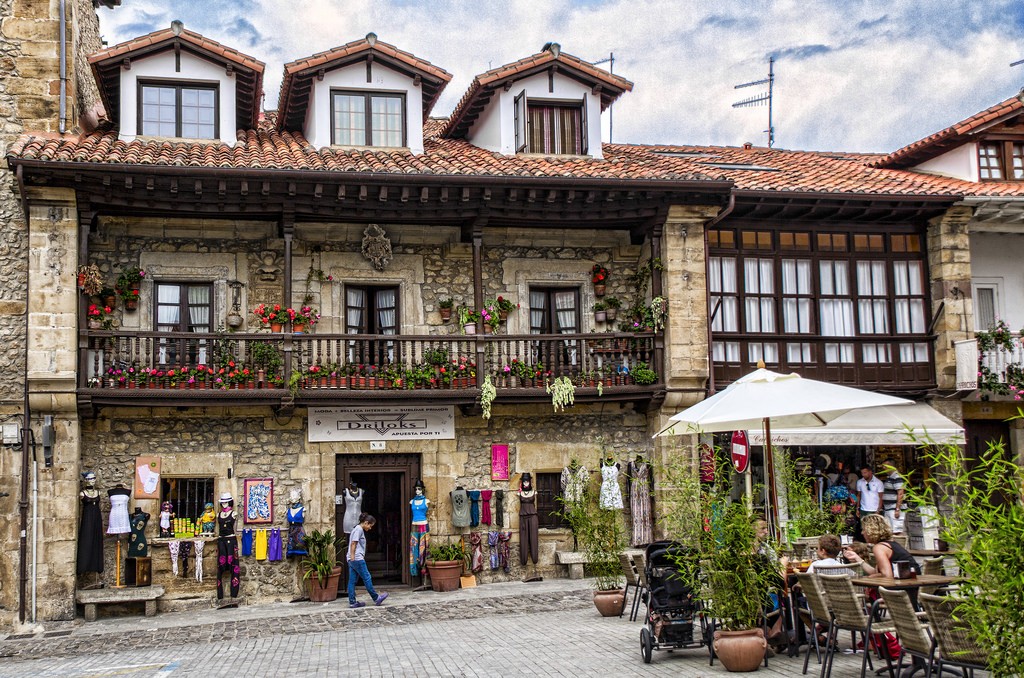
Today, Comillas is still a charming destination for Spanish holidaymakers and you’ll also find a few pilgrims walking through as they take part in the Camino de Santiago. photo credit: Miquel Fabré COMILLAS via photopin (license)
At Totally Spain we liked Cantabria so much, we chose to locate our HQ here in 2005. Although it is a well-known tourist destination within Spain, Cantabria is still only emerging as a place for international travellers to visit. Why do we rate Cantabria so highly? Great people, amazing food, top class beaches, jaw-dropping countryside and scenery, excellent wineries, inspirational architecture and so much more. Have a read of 10 Reasons to Come to Cantabria and check out the Totally Spain guide to Michelin-star dining in Cantabria to whet your appetite.
Totally Spain recommends a full day in buzzing Santander which is home to wonderful tapas bars, taverns and elegant dining. On one of our private custom tours we can book you into a hotel on the waterfront but if you’d rather avoid the city, we’ll find a wonderful hotel amongst the medieval cobblestoned-town of Santillana del Mar, which is close to Comillas, or in the countryside. We’ll arrange for you to visit Comillas with a guide – including the Capricho and any other buildings or elements you’d like to explore. We can also book a table for you at a nearby elegant restaurant overlooking the coast. Afterwards, you might like to stroll by Comillas beach or the nearby Oyambre strand.
If you have more than a day or two, we’ll take you to Altamira Caves museum (read the Totally Spain guide to Cantabria’s cave art here) and we’ll also pre-book a table for you at a special restaurant such as the Michelin-starred Annua at San Vicente de la Barquera. For extra drama, Totally Spain can add on an overnight at the Hotel del Oso by the Picos de Europa National Park and arrange a pass to take the cable-car up into the mountain peaks where. A great way to soak up all that Green Spain has to offer.
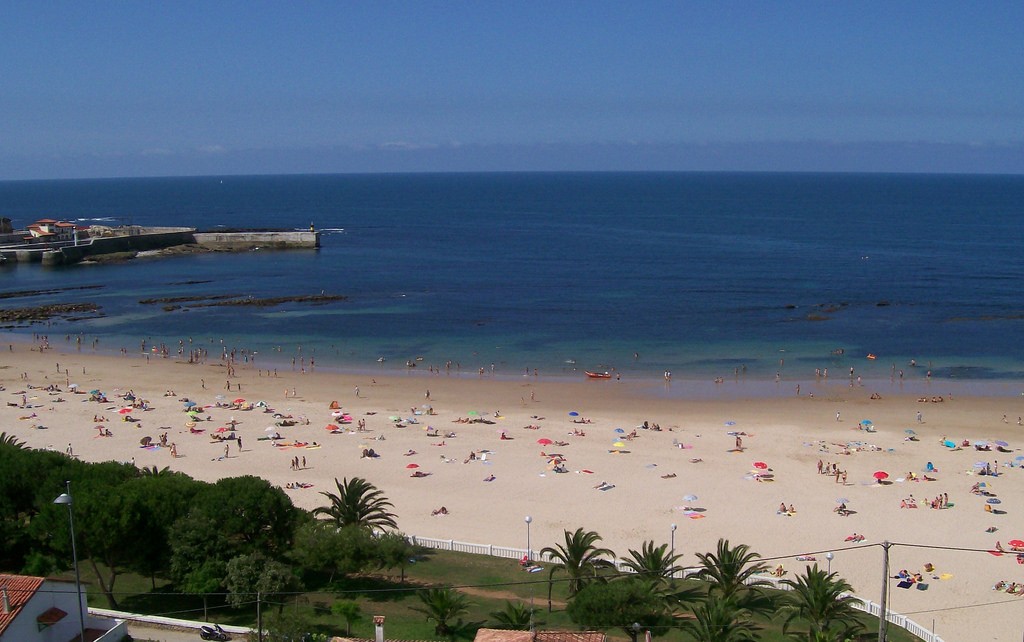
This beach at Comillas is pretty special as is the nearby playa in Oyambre! photo credit: PacoBarranco Comillas-09-playa via photopin (license)
How to Get Here & Travel Around Cantabria:
You can fly into Santander Seve Ballesteros Airport from Barcelona, Madrid and a host of other destinations which you can see here. And there are ferries to Santander with Brittany Ferries from Portsmouth, Plymouth & Cork. Totally Spain can also arrange car-hire for you – or if you’d prefer, one of our private drivers.
